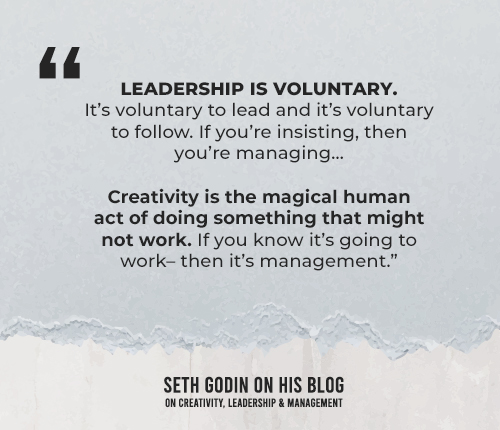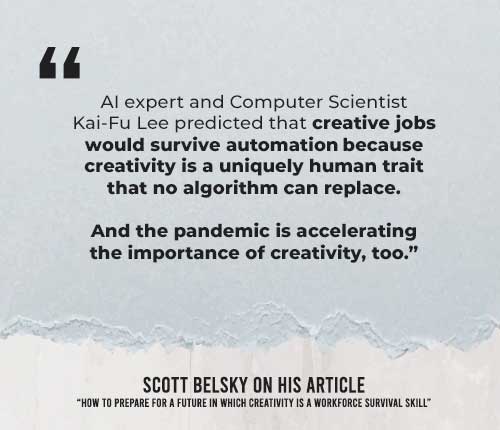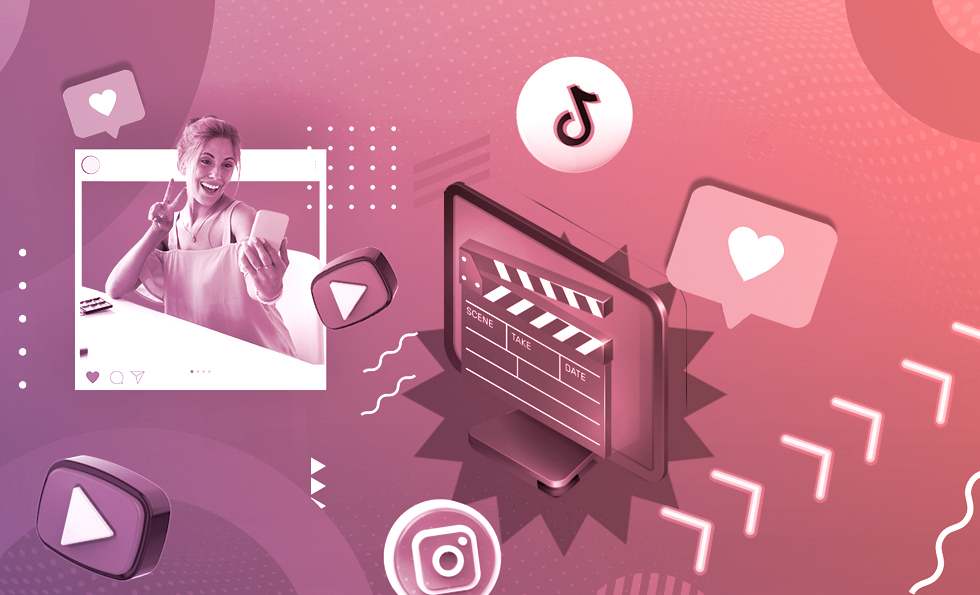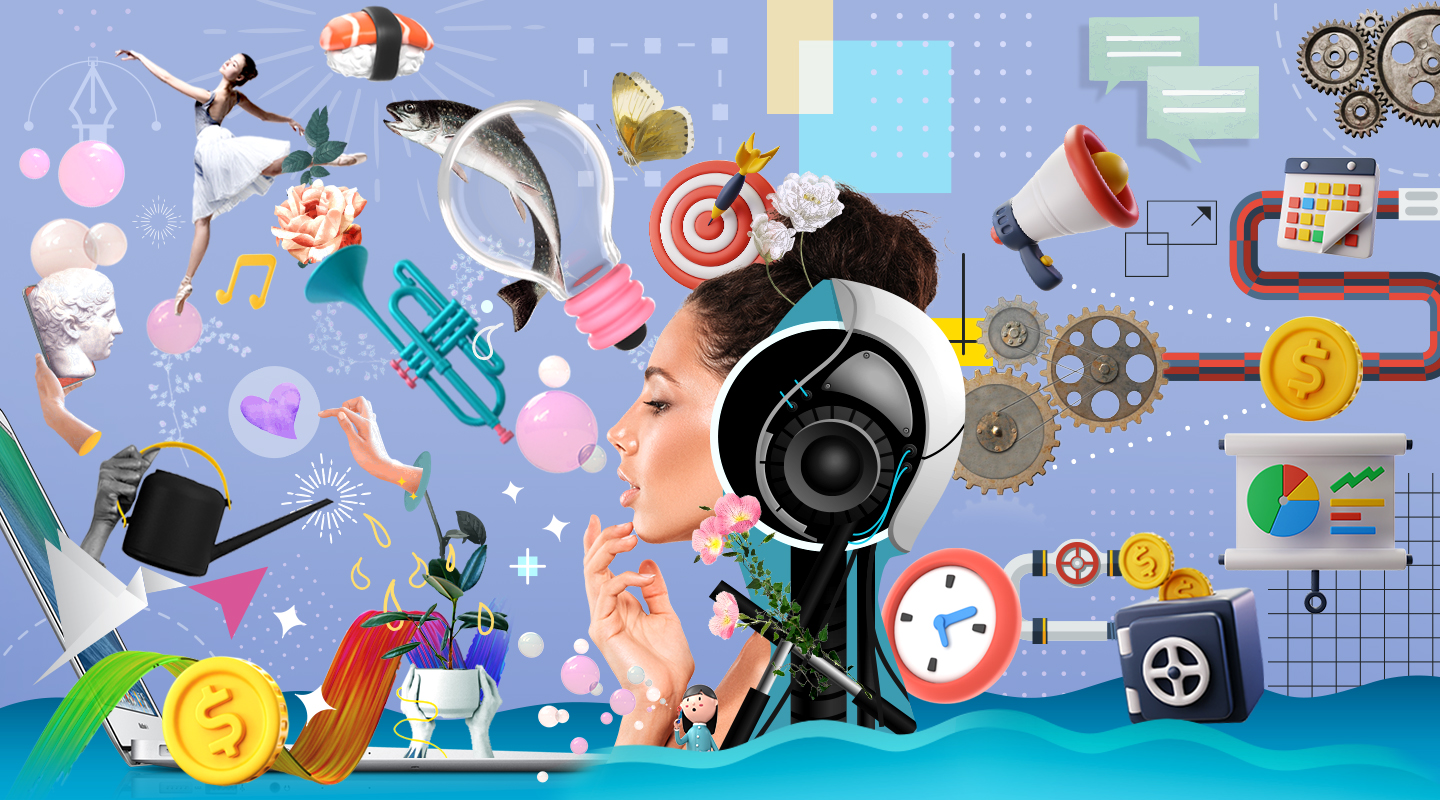
Creative roles continue to evolve with the daily project activities we experience with our team and clients. We get motivated and on the edge to scratch that creative itch every time we hear these lines from clients:
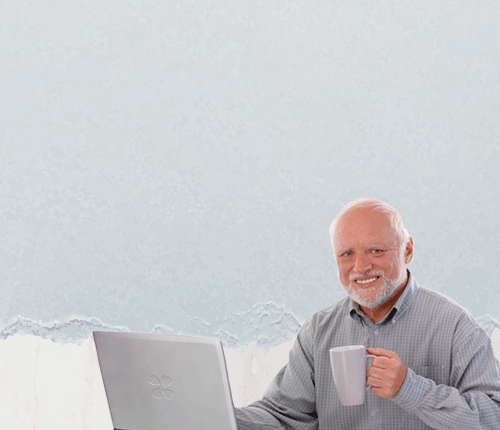
Being in the creative industry for over a decade now, these lines have bounced off countless office hallways and even continue to echo in my head right before bed. Getting used to these words can push any creative person to master a set of skills – but it sure takes a lot more practice to develop a firm design muscle to effectively manage and tackle different creative challenges with a team.
The artist in us tend to exhibit a level of passion, and dare I say – even ego in the kind of work we put in whenever we explore new ways to delight our clients. Our ideas strongly reflect our beliefs, and understandably, this can at times get in conflict with client’s objectives and set business strategies.
Given the fast-paced and competitive nature of the industry, we are required to always be ready to come up of remarkable outputs and explore new techniques to foster more creativity whilst meeting business goals. But, how exactly can this be best balanced and achieved between our team, clients, project budget and end-users, within a limited timeline?
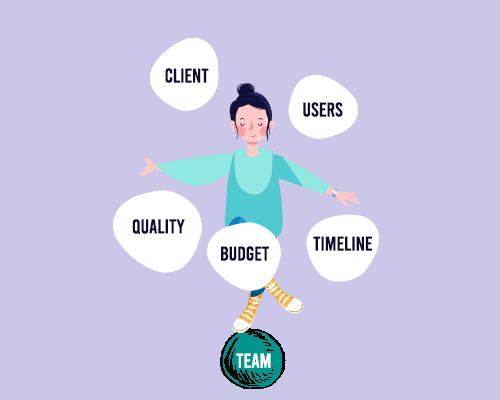
DEFINING CREATIVITY, LEADERSHIP & MANAGEMENT
To arrive at the answers and solutions we seek, it is best to define first what “creativity” means and how “management” differs from “leadership”.
We all can agree that effective leadership and management require the basic implementation of methods, which guides the team towards achieving a common goal.
Even so, how can creative members be led to observe the right process and aesthetic standards, when these concepts remain highly subjective?
How do we define being “creative” when anyone is capable of an original idea?
How can we think “OUT-OF-THE-BOX”, yet work in a system?
Can we confidently say that we can be creative leaders in a competitive industry led by growing tech automation?
Our creative ideation journey can be as exciting as it is frustrating. Selecting the “best” idea and finalising a draft is every creative leader’s daily decision-making dilemma. And it is always a good problem to have. But what happens when the team runs out of creative juice and ends up stuck in a routine?
Here are a few points from online creative gurus who can help properly define and address these questions posed by the xDNA creatives team.
Seth Godin shares that creativity and leadership are related and both take courage, while anything that uses power and systems to accomplish tasks, is considered management.
Each person has a capacity for creativity. But the most difficult part about being creative is when we get limited by our egos and having the fear of failing. Ego and Fear must be faced head-on until they become more manageable and channelled constructively.
There are fears that the industry we are in is becoming too competitive with the growing culture of tech automation. With this, some are very cautious on valuing the art and old traditions so much they don’t anymore want to welcome new processes.
But, why fear when we can confidently say that creatives are contributing new solutions to emerging problems today? The creative industry will surely grow even more when we share and welcome new collaborative tools we can use as a team.
Chief Product Officer of Adobe, Scott Belsky also shared in his article here that even the pandemic has accelerated the importance of creativity. Our creative teams simply need to keep an open mind and readily adapt to new technologies and practices.
Our hunger for learning is the key for our creativity, we should value that hunger as if it’s the only workforce survival skill. Instead of viewing automation and new technologies with fear, we should be grateful and utilize them to improve and expand the services we provide. A proper mindset overhaul will help to take out that fear.
Simply put: an effective creative leader must face the fear, possess courage and the willingness to dive into a sea of uncertainties. It is up to us how we can grow creatively by shared experiences and adapting to new systems we can discover.
THE UX MINDSET WITHIN THE xDNA CREATIVE TEAM
As creative professionals, we need to equip ourselves with the right design processes and mindset to take on the daily grind. Our design roles for each project do not merely start and stop at ideation, setting the right colours, shape and layout. We are involved in every part of the project phase until we can validate and solve problems for both clients and end-users.
With this, it is essential to welcome new learnings and develop a UX mindset for a creative team to work effectively. Here are some ways to start fostering the team’s creativity with a UX mindset:
01) BUILDING EMPATHY IN CREATIVE TEAM LEADERS
Build Empathy for Users and Project Participants.
Effective leaders spearhead projects through vision, strategy and process to reach specific goals. Navigating and executing such phases with great success is one thing, but doing so while developing each member’s skills and consistently catering to end-users, is another.
Having the ability to put ourselves in another person’s shoes and connect deeply through different perspectives can help us navigate project direction infinitely better. This leadership mindset helps the entire team discover new ways of improving productivity and promoting constant growth, while at work.
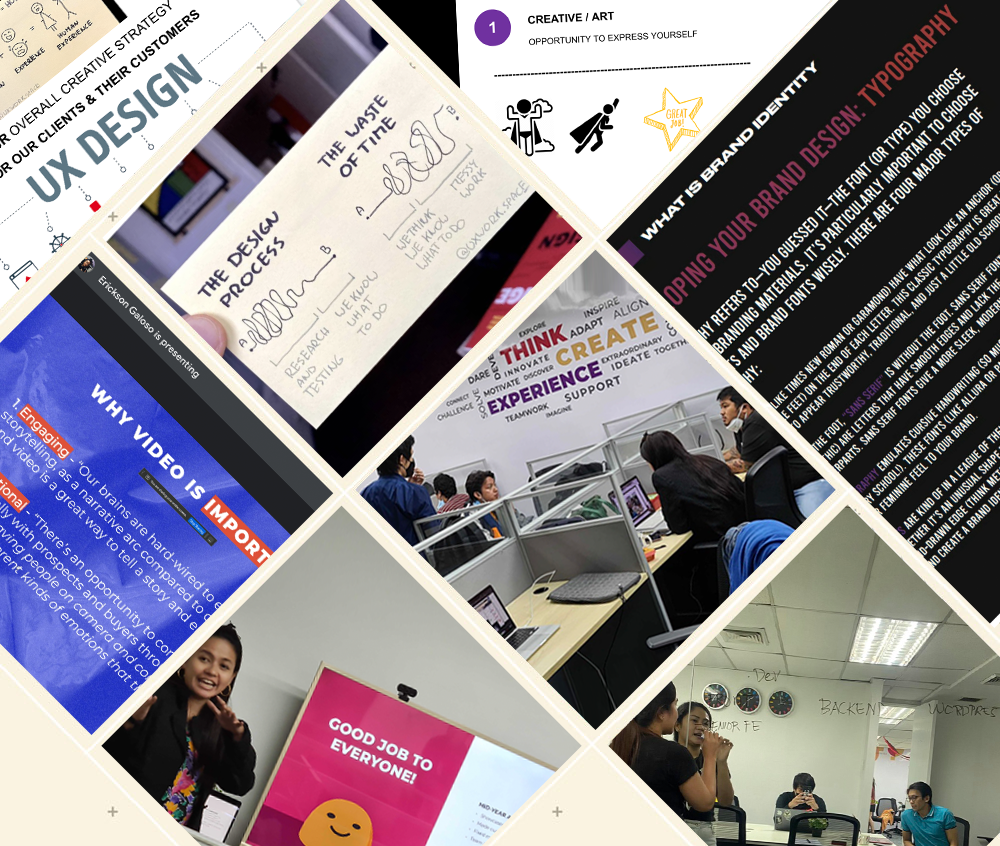
The creative team at xDNA makes it a point to remain aligned on exact project specifics in consideration of individual timelines. We value commitment towards every task and share accountability for each project’s success or failure.
02) ENCOURAGE TEAM & CLIENT COLLABORATION
Have A Growth Mindset. Grow and Develop Skills by Learning Together.
The key to the team’s continuous progress on all fronts stems from our ability to share new and unique ideas and develop skills from daily discoveries. This is a common struggle in some creatives, especially if they lack confidence and fear rejection. By promoting open communication during brainstorming sessions, the entire team can contribute and develop more flexible approaches together.
The same can be said for our client partners. When we treat them as project teammates, this allows both sides to explore a wider range of design planning and make well-informed decisions for all. Open collaboration will welcome more opportunities for the team to educate the client on the latest design trends and best practices to consider. During these sessions, the team also becomes exposed to new strategies which can help develop their professional and interpersonal skills.
At xDNA, we do monthly creative sharing sessions to acquire new insights from every member and client. One-on-one sessions with the team manager are also held every quarter, to help keep track of each member’s individual performance and goals.
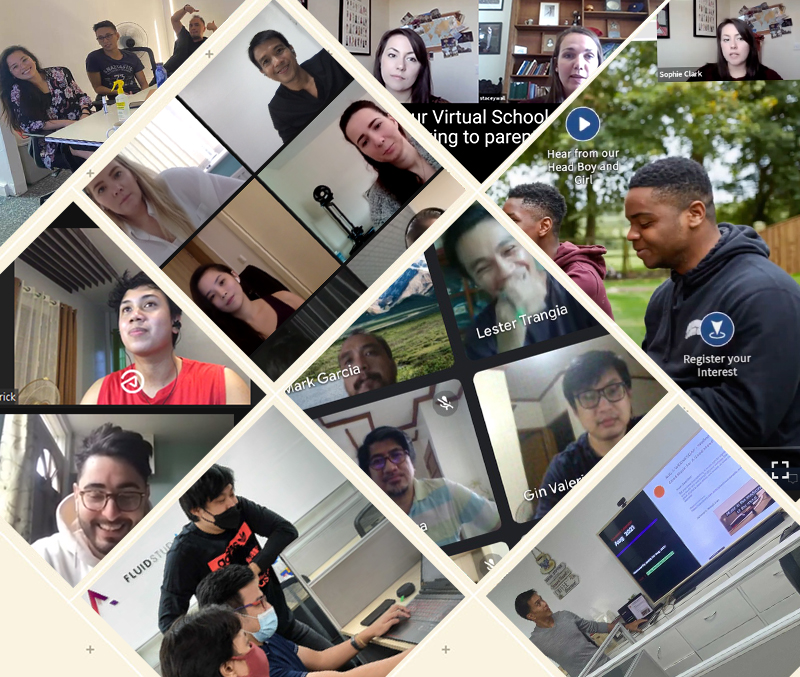
Despite our diverse personalities and preferences, the team shares the same drive and eagerness to share input and work together. With these traits, we can say with confidence that we are ready for and look forward to every creative challenge thrown our way.
03) IMPLEMENT PEER DISCOVERY & ADAPT BASED ON SHARED EXPERIENCES
Consistent Adaptability Improves Productivity.
Every project participant deserves to be heard and valued. Welcome every chance to encounter unexpected lessons without bias or hesitation.
Implementing new design systems, in particular, requires the adaptability of both the organization and the clients to make adjustments and progressions at the same pace. This might take some time but it’s necessary to take these baby steps. In the long run, the results will help improve the team’s performance and can even speed up work processes.
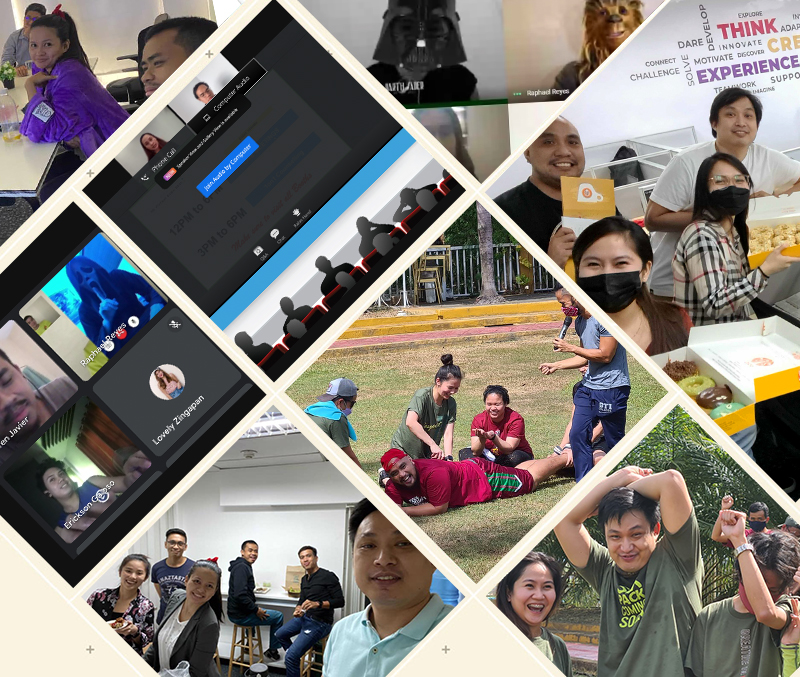
Uncovering new strategies to solve problems together keep us more engaged in collaborative decisions, which ultimately, helps smoothen the flow of productivity. We must set our egos aside during this stage to take risks and readily embrace multiple iterations. After all, great things happen when we work as a team.
DISCOVERING OUR CREATIVE APPROACH FOR BUSINESS GROWTH
Every creative team’s power and desire for growth continues to create a big business impact that goes beyond simply making products pretty. Given this great power, every creative person is expected to come in with a great level of responsibility especially when working with several remote teams.
Designers who have yet to explore their design methodologies can feel overwhelmed with the complexities of UX processes in mind. Realizing the lack of design process is a nice place to start to overcome this challenge. The very awareness of this design problem, is the first step to solving it.
OUR SIMPLE, TWO-STEP APPROACH FOR EVERY BUSINESS PROJECT:
01) Identify the problem to solve and understand project roles.
02) Value diversity to make more inclusive and credible decisions for the next steps.
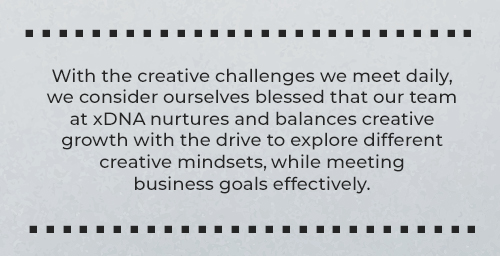
No matter what level we are now with our UX Maturity, there will always be room for improvement. It’s important to understand that part of the UX process is to constantly iterate ideas and manage our shared discoveries with the team and even our clients. There is no such thing as a one-size-fits-all solution because the right approach will depend on several factors distinct to each project.
For best results, each member should have an understanding and value of every person’s role, and consciously include them in setting the foundation of the team’s design thinking process – even if they consider an entirely different angle. After all, implementing a UX Mindset emphasizes including different mindsets to seek out more possibilities to improve how things are done.
Understanding people and their behaviour are at the heart of it all. Just like creativity, the UX mindset is a skill to be learned, practised, and developed through the mastery of a wide variety of disciplines, through each other.
The more we lead the team to practice a creative mindset, the more it will grow.
Sources:
https://careerfoundry.com/en/blog/ux-design/what-is-empathy-in-design-thinking/
https://blog.prototypr.io/the-ux-mindset-53a343053bef
https://www.linkedin.com/pulse/building-user-experience-mindset-whole-team-fransiscus-tobias/
https://www.interactive-storyteller.com/interactive-storyteller/2021/1/24/why-create-products-from-a-ux-mindset
https://uxdesign.cc/mindsets-for-better-ux-5ddeaf183087
https://qz.com/work/1929629/how-to-prepare-for-a-future-where-creativity-is-a-survival-skill/
https://www.weforum.org/agenda/2020/11/ai-automation-creativity-workforce-skill-fute-of-work
https://youtu.be/gJ_s1dNaN3k
https://seths.blog/2021/09/creativity-and-leadership/
